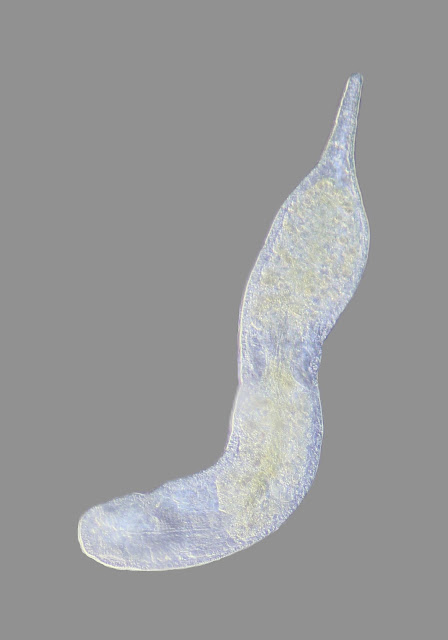My wife was cutting down some tulip stems to make them last another few days and offered to donate some of the leaves and cuttings to my microscopy lab. So here I am trying to cut some freehand stem sections with very little success. The sections all had a number of cell levels and didn't show up well under the microscope. I only had the single sided razor blades, not the thinner double sided ones recommended so that may have been the problem. I was however able to peel a surface layer off a leaf that was only one cell thick and got some images of stomata and their controlling guard cells. The two guard cells, 57 um long and with visible chloroplasts, control the size of the stomata opening (28 um).
The original images were quite colourless so I experimented with a plastic petri dish cover as a wave plate and was quite pleased with the results.
While again trying to cut some thin stem sections, again unsuccessfully, I managed to peel off a thin layer of cells from the stem. Under the microscope I again saw stomata but this time the petri dish lid coloured it a nice blue. Also notice the shape of the stomata changed from almost spherical to elliptical.





























